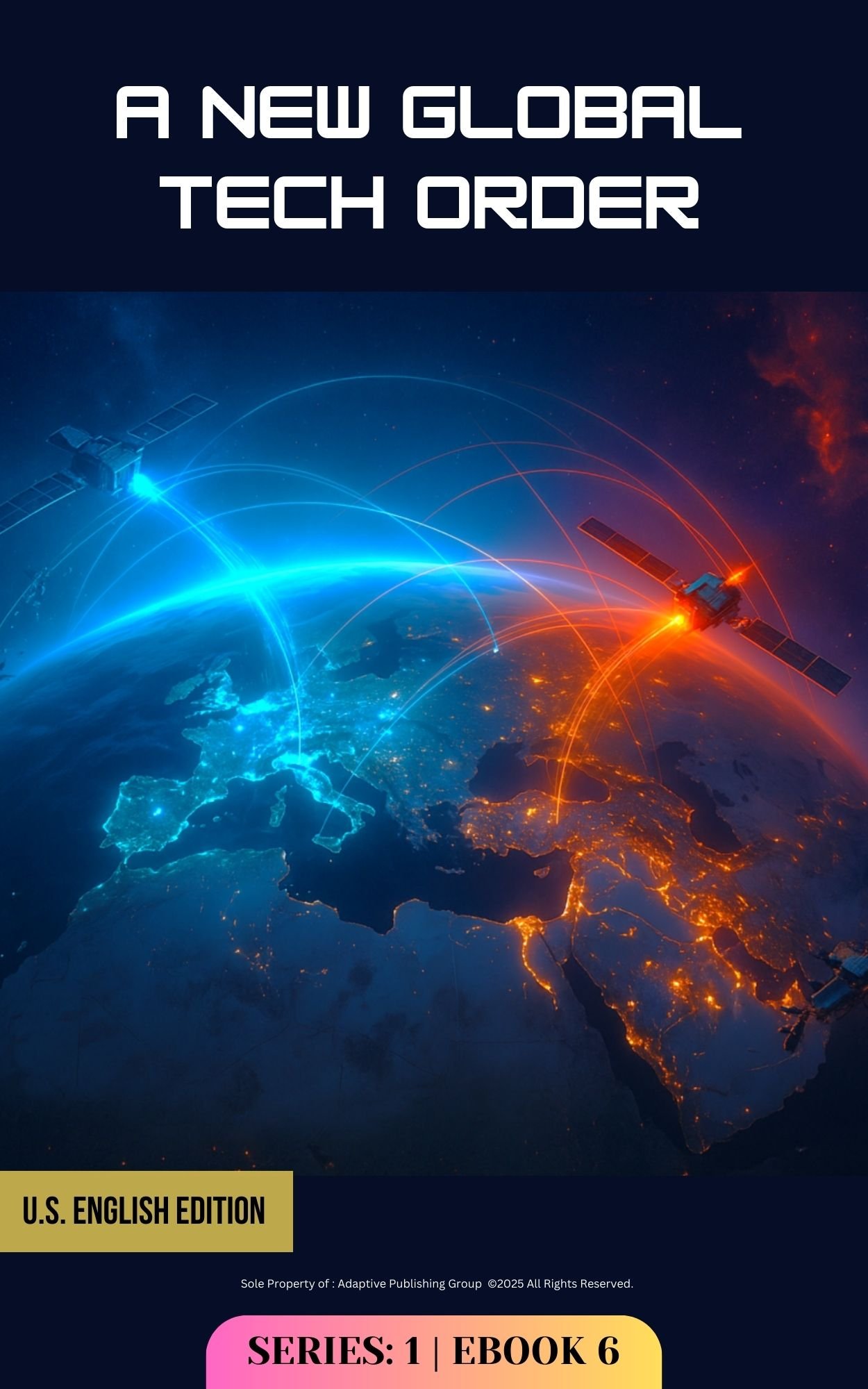
AC-Series-1, eBook 6: A New World Order
A Glimpse Into the Future
Through the lens of a 2035 time traveler and grounded geopolitical analysis, we open with a startling revelation: the U.S. tech empire is no longer leading. While American corporations fight to defend outdated systems, China and the EU are building the future—fast.
Chapter 1: Why the U.S. Was Caught Off Guard
From Silicon Valley’s obsession with quarterly earnings to Washington’s regulatory gridlock, this chapter uncovers the foundational cracks that left U.S. tech giants vulnerable. While the U.S. leaned on litigation and monopoly defense, rivals leaned into transformation.
Chapter 2: Failure to Invest in Adaptive Computing
While China and the EU built adaptive, AI-driven infrastructure designed to evolve in real time, the U.S. doubled down on legacy silicon and massive—but misguided—AI infrastructure like the $500 billion domestic AI grid. SoftBank’s $100 billion bet, and mega-facilities in Texas, were hailed as milestones—yet proved to be mirages. In hindsight, America was investing in yesterday’s vision, while its rivals were coding tomorrow.
Chapter 3: Geopolitical Overreach
Tariffs. Sanctions. Bans. In trying to protect domestic dominance, the U.S. pushed rivals into self-reliant ecosystems. China responded with quantum firewalls and independent satellite architecture. The EU, with cross-border unity and regulation, built sovereignty by design. In trying to strangle competitors, America accidentally supercharged them.
Chapter 4: The Rise of China and the EU in Next-Gen Satellite Networks
Starlink and Kuiper? Yesterday’s toys. This chapter details how adaptive satellites—capable of AI-driven self-healing, reconfiguration, and distributed quantum encryption—became the global standard. Europe went green and modular. China went fast and expansive. Together, they rewrote space strategy while the U.S. looked the other way.
Chapter 5: The EU’s Rise to Power
Europe’s model is quiet but lethal: unified regulation, pooled R&D, and the “Airbus strategy” now applied to satellites. While the U.S. fights internal lobby wars, the EU builds orbital resilience through cooperation. This chapter showcases how soft power, foresight, and sustainability beat brute force every time.
Chapter 6: The $20–$30 Billion Investment That Ended America’s Monopoly
America thought scale was invincibility. But with focused $20–$30 billion investments, China and the EU leapfrogged the U.S.’s bloated $500B+ spending. Adaptive computing, decentralized AI, and quantum-secured satellites gave them permanent leverage in global tech. The game changed—not with a trillion-dollar budget, but with precise execution.
Chapter 7: The Economic, Political & Technological Power Shift
With adaptive infrastructure comes control of commerce, communications, and national security. Africa, Southeast Asia, and Latin America are migrating to EU- and China-backed networks. American firms? Struggling to stay relevant. This isn’t a trade war—it’s a new architecture for the digital world.
Chapter 8: The Airbus Strategy – How Europe Is Using Joint Ventures to Dominate Space
This chapter unpacks Europe’s most underappreciated strength: joint ventures. Borrowing from the Airbus playbook, EU member states coordinate AI development, orbital design, and encryption standards—lowering costs and accelerating innovation. The future of global infrastructure is neither American nor Chinese—it may very well be European.
Chapter 9: Looking Ahead – The Dawn of Adaptive Computing Dominance
By 2035, quantum-secured, AI-optimized satellites deliver 1 Tbps+ connections, operate autonomously, and reshape governance, commerce, and national identity. The U.S. still leads in branding—but not in substance. The dawn of Adaptive Computing is already here. Whether America survives this shift depends on decisions not yet made—and time is running out.
KEY TAKEAWAYS
- China and the EU now hold the keys to the future—with agile, adaptive infrastructures.
- America is stuck defending the past, investing in legacy systems and corporate monopolies.
- A new global tech order is already forming, and it doesn’t orbit around Silicon Valley.
- Strategic foresight—not brute financial muscle—will define the next 50 years.
Final Thoughts
A NEW GLOBAL ORDER isn’t a warning. It’s a blueprint. A geopolitical x-ray of the moment the torch passed—from yesterday’s leaders to tomorrow’s architects. If you work in tech, policy, finance, or global strategy, you need to know: the digital world isn’t just changing. It’s being rebuilt from the sky down.
And only those who adapt will survive.
